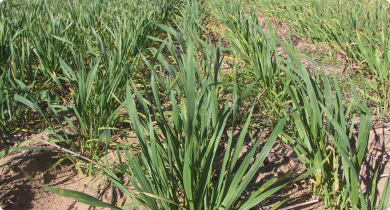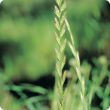Wheat
Wheat production accounts for 65% of total cereal production in Western Australia with about ten million tonnes generated annually in a rain-fed system across four million hectares of land.
About 95% of WA wheat is exported - predominantly to Asia and the Middle East - generating $2-5 billion in annual export earnings for the state.
Despite a decline in annual rainfall, the improvement in agronomic practices and development of new premium wheat varieties have enabled an increase in WA wheat yield over the past 30 years at a rate higher than world average.
The Department of Primary Industries and Regional Development has a strong research, development and extension focus on wheat production through its long history in wheat breeding - now privatised through Intergrain - and the development of wheat variety management packages for the state’s grain production zones.
Filter by search
Filter by topic
- (-) Remove Grains research & development filter Grains research & development
- Pests, weeds & diseases (27) Apply Pests, weeds & diseases filter
- Diseases (21) Apply Diseases filter
- Crop diseases (17) Apply Crop diseases filter
- Control methods (16) Apply Control methods filter
- Production & postharvest (14) Apply Production & postharvest filter
- Fungi (14) Apply Fungi filter
- Chemicals (13) Apply Chemicals filter
- Barley (10) Apply Barley filter
- Fungicides (7) Apply Fungicides filter
- Weeds (7) Apply Weeds filter
- Crop weeds (7) Apply Crop weeds filter
- Oats (6) Apply Oats filter
- Mechanical, physical and cultural (6) Apply Mechanical, physical and cultural filter
- Canola (6) Apply Canola filter
- Climate, land & water (6) Apply Climate, land & water filter
- Soils (5) Apply Soils filter
- Soil acidity (5) Apply Soil acidity filter
- Fertiliser (5) Apply Fertiliser filter
- Plant nutrition (5) Apply Plant nutrition filter
- Lupins (5) Apply Lupins filter
- Soil management (4) Apply Soil management filter
- Sowing (4) Apply Sowing filter
- Soil constraints (4) Apply Soil constraints filter
- Liming (4) Apply Liming filter
- Viruses & virus-like (3) Apply Viruses & virus-like filter
- Pulses (3) Apply Pulses filter
- Pastures (3) Apply Pastures filter
- Investment attraction (2) Apply Investment attraction filter
- Pasture management (2) Apply Pasture management filter
- Food, export & investment (2) Apply Food, export & investment filter
- Breeding & varieties (2) Apply Breeding & varieties filter
- Managing soils (1) Apply Managing soils filter
- Investment (1) Apply Investment filter
- Nematodes (1) Apply Nematodes filter
- Pasture establishment (1) Apply Pasture establishment filter
- Pests (1) Apply Pests filter
- Herbicides (1) Apply Herbicides filter
- Soil nutrients (1) Apply Soil nutrients filter
- Biological control (1) Apply Biological control filter
- Bacteria (1) Apply Bacteria filter
- Agribusiness Food & Trade (1) Apply Agribusiness Food & Trade filter
- Climate & weather (1) Apply Climate & weather filter
- Export services (1) Apply Export services filter
- Frost (1) Apply Frost filter
- Harvesting (1) Apply Harvesting filter









